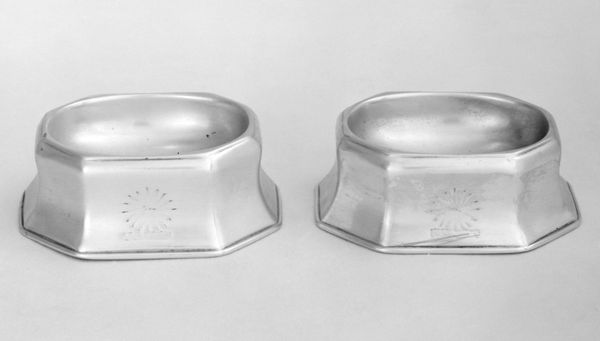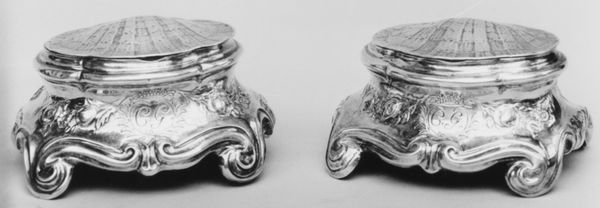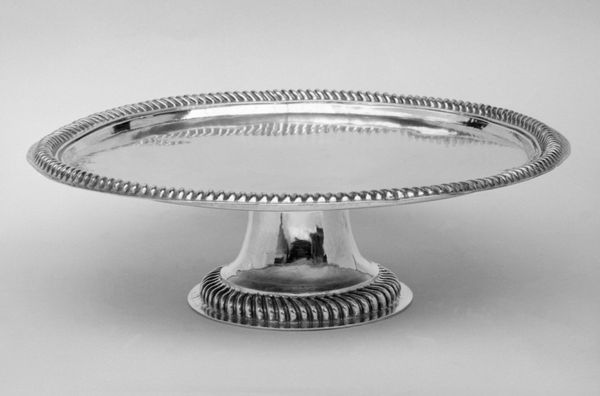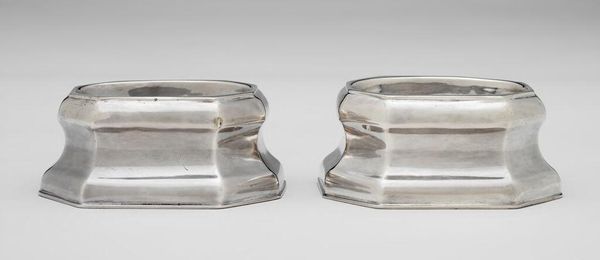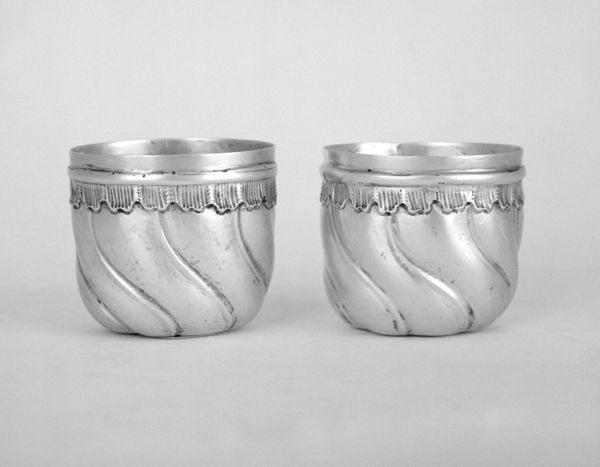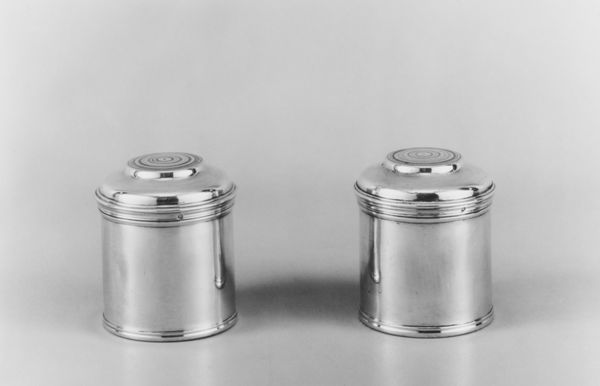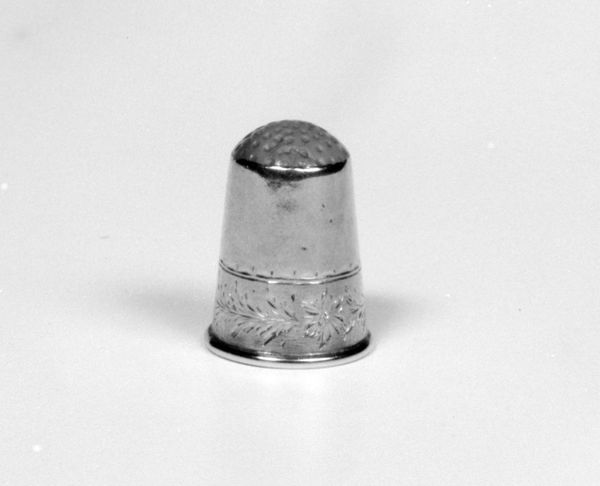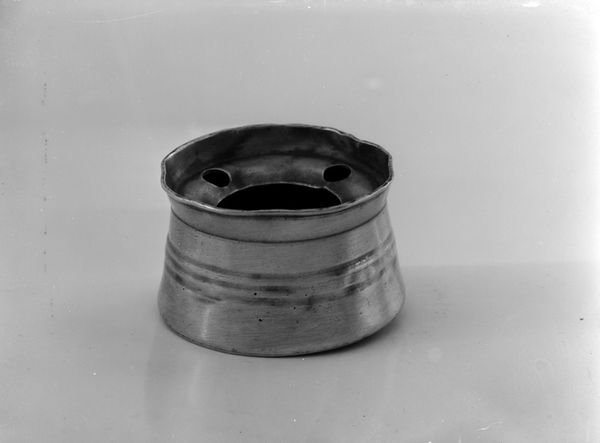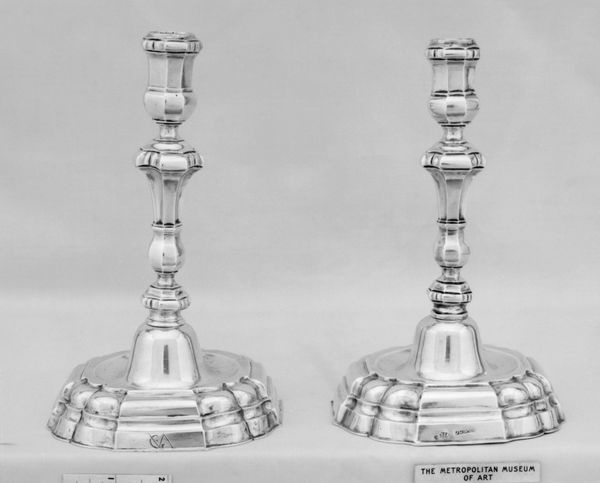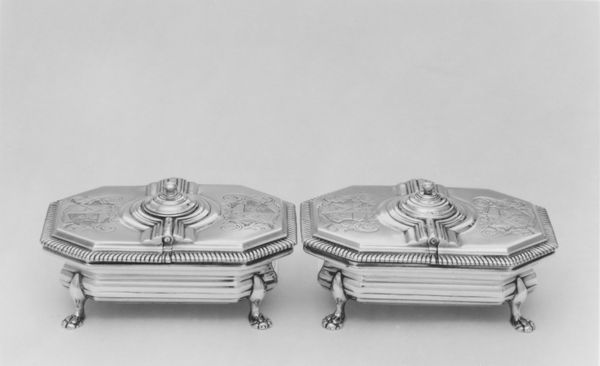
silver, metal, sculpture
#
silver
#
baroque
#
metal
#
sculpture
#
decorative-art
Dimensions: Overall (each): 7/8 × 2 1/4 × 3 in. (2.2 × 5.7 × 7.6 cm)
Copyright: Public Domain
Curator: At the Metropolitan Museum, we find this intriguing pair of saltcellars crafted around 1714-1715 by Thomas Folkingham. The medium is silver, a rather luxurious choice, don’t you think? Editor: Immediately striking. Even in the picture, they give off an intense cold, manufactured feel. Perfectly symmetrical; each angle looks precisely planned. Curator: Considering they were produced in the early 18th century, this speaks volumes about the cultural significance of salt during that period, as salt used to signify prestige and wealth. Serving ware such as these marked your position within society. Editor: That elevated status has clear material implications. Think about the silversmith's labour—the processes of extraction, refinement, and crafting. This involved skilled labor but also extractive processes that undoubtedly impacted working class people. It isn't neutral. Curator: Precisely. Silver, of course, was highly sought after for its malleability and sheen, so you end up seeing that reflected in a variety of Baroque art. It can speak to social hierarchies, displays of wealth, but also to broader socio-economic structures in early eighteenth century Britain. These saltcellars could also reflect societal norms, with their intended users often reflecting white, wealthy classes. Editor: Agreed. Thinking of material composition is crucial here, it brings us to thinking of exploitation and modes of making at a macro level. Who designed these? What tools did they employ? Were they aware of this silver's journey and ecological extraction implications? This craftsmanship highlights material agency; these forms didn't just spontaneously appear! Curator: These pieces act as fascinating cultural artifacts, illustrating not only refined Baroque design preferences but shedding light onto production conditions and highlighting questions about the function of high society during that time period. It goes beyond aesthetics when one asks: what implications follow such artistic decisions? Editor: Absolutely. Engaging with material history transforms simple functional items into compelling evidence for considering broader power dynamics inherent throughout societal strata; analyzing each material component helps decode larger meaning behind functional wares. It requires recognizing the interconnected realities across time to uncover narratives often erased by tradition. Curator: Examining seemingly modest objects opens pathways toward larger cultural and economic critique that continue relevance, prompting exploration beyond visual charm into deep reflection over lived reality depicted indirectly through its art manifestations. Editor: It's quite powerful, when you realize how a single, almost utilitarian pair of objects can carry such significant weight in unraveling complex societal textures across both temporal spans. The beauty lies within challenging conventional wisdom that material can inform ideological stance when approached critically and comprehensively!
Comments
No comments
Be the first to comment and join the conversation on the ultimate creative platform.

